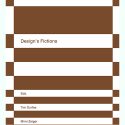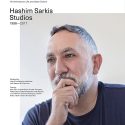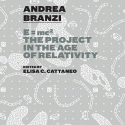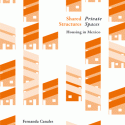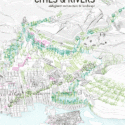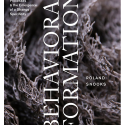Made Up
NESS. On Architecture, Life, and Urban Culture 1
Issue 1/ Between Cozy History & Homey Technics
Lots of Architecture Publishers introduces NESS: a magazine on Architecture, Life, and Urban Culture. For the Spring 2018 issue, NESS warms up with a selection of the nine installations that rocked 2017 and further browses through the work of Eleni Petaloti & Leonidas Trampoukis, whose sibling practices—LOT and objects of common interest—shift from one scale to another with subtle sophistication. Plus, Berlin-based architect Lena Wimmer presents her utmost experimental projects. Next, NESS headed to Detroit and dedicates a 38-page survey to draw a portrait of the city through their own curious and questioning lenses. The editors went to the Planning and Development Department and talked to authorities, designers, architects, community representatives, and developers shaping the former Motor-City. In the Dossier section, “Between Cozy History and Homey Technics”, architects, critics, and thinkers were asked to provocatively discuss the intellectual and pragmatic set of tools at hand: Stan Allen and Jesus Vassallo talk about photography and the built environment as a filter of abstraction; Enrique Ramirez and Mimi Zeiger reflect on the aesthetics—or lack thereof—in contemporary representation technics; Emanuel Christ and Camilo Restrepo imagine the type as a vehicle for ideas to travel through building cultures; and Sharon Johnston and Florencia Rodriguez exchange views on curating in architecture. Lastly, NESS crew flew to Chicago, Vienna, Seoul, and Valparaiso to review the latest events and reflect upon the biennial phenomenon. And, finally in Documents, NESS sat down with two acclaimed architecture offices: French Bruther and New York-based SO – IL to get to know each of their practice, processes, and projects in a comprehensive interview, detailed drawings and photographs. With contributions of Florencia Rodriguez, Pablo Gerson, Stan Allen, Emanuel Christ, Daniela Freiberg, Anna W. von Huber, Sharon Johnston, Isabella Moretti, Lisa Naudin, Enrique Ramirez, Camilo Restrepo, Javier Agustín Rojas, Mariam Samur, Lisa Ubelaker Andrade, Jesus Vassallo, Lena Wimmer, Mimi Zeiger. Part of the Ness Collection. Buying it, Superhumanity as a gift.NESS.docs 1
Issue 1/ Hashim Sarkis Studios 1998 - 2017
Florencia Rodriguez, Pablo Gerson, Stan Allen, Angelo Bucci, Kenneth Frampton, Fabrizio Gallanti, Gabriel Kozlowski, José Mayoral, Luca Molinari, Hashim Sarkis, Nader Tehrani & Felipe Vera. NESS.docs on Hashim Sarkis Studios has two parts: Projects and Dialogues. The first section includes enticing visual documentation on HSS’s projects (Balloon Landing Park, Housing for the Fishermen, Daily Mosque, Town Hall & Park, Float Pavilion, Watermelon Landscape, and Courtowers) complemented by critical remarks by Nader Tehrani and Sarkis. In the Dialogues section issues an interview to Sarkis by editors, Florencia Rodriguez and José Mayoral, a conversation between Angelo Bucci and Sarkis, and a discussion between Stan Allen, Kenneth Frampton, and Sarkis. Architecture simultaneously responds to two parallel and seemingly contrasting inputs. First, to the internal concerns of the architect who seeks to react to his own intellectual, emotional or social preoccupations through built work. In some cases, that internal impulse inspires the architect to materialize the same interest again and again, through every work. Second, there are specific requirements for each built work: an encounter with reality and the need to consider the context, people and society, all factors which make every architectural project a highly specific venture. This secondary input provides a solution for challenges that can at first seem extremely undefined. In the case of Hashim Sarkis, such dialectic relationships are expressed throughout one consistent focus: the relationship between the sky and the ground. This relationship is present in every work despite diverse contexts, that bring singularity to every architectural project. Through his numerous built works, we have seen the many ways in which sky and ground can be constructed, framed, viewed, approached, dis-covered, and reinterpreted. A rich set of operations redefine the challenges present throughout every built work: how does a building emerge from a discrete plane and close towards the infinite sky? How do we negotiate the certainties of reality with the uncertainties of that which we cannot measure, that which is not only void, but that in its dynamic movements and constant transformations imprints upon the real? By the real, we mean the façades of buildings, the reflection of windows, and all of the internal and external attributes of the built fabric as well as those of landscapes with color, temperatures, humidity, and, of course, the passing of time that is registered in every component, except in the sky. —Extract of Jose Mayoral & Felipe Vera’s opening essay, “Understanding a Reflective Practice: Drawing the Third Line” See Preview on issuu Part of the Ness Collection . Buying it, Superhumanity as a giftAndrea Branzi (ENG ED.)
E=mc2 The Project in the Age of Relativity Andrea Branzi, Elisa C. Cattaneo
From radical research to contemporary design, this book collects Andrea Branzi’s work about city-design and a new opportunity to interpret and anticipate the next dynamics of society. Territories that are conceptual categories, through spaces that are offered up by reality such that design can act and perform cognitively: in this sense, the city becomes a critical concept capable of overcoming its own image. Each passage presents a precise anthropological articulation: from the concept of commodity civilization of the Sixties to that of immateriality, from the concept of the metropolis to that of the anthropological territory, in which the infinitely small and the immensely large coincide, to the point of generating and passing beyond our commonly held concept of the city. The publication begins from the Andrea Branzi’s reflection on the relationship civility-design, from the Radical's research on mass-production civilization to the "infinite territories", proposing new territories able to interpret and anticipate the new dynamics of society. In particular, if the first chapters review the historical/critical works of Andrea Branzi and of Radical Movement, the last opens a new parenthesis of research, right now never expressed: the issues ignored by Modernity, like life, death, destiny and the sacred: themes which underline the new drama and the fracture between tragedy and normality, between consumerism and death, between theology and technology, between the silence of reason and the voice of an irrational reality.
Graham Foundation Grant Buy Italian editionShared Structures. Private Spaces (ENG ED.)
Housing in Mexico Fernanda Canales
A case study that analyzes the relationship between ideas and houses, this book focuses on 100 years of housing projects in Mexico. The geographic, social, and economic diversity of Mexico constitute a prime example of the challenges inherent to meeting individual needs in an increasingly crowded world. The drawings and essays comprise new ways of looking at theories and buildings in order to redefine the connection between housing and the city. This research is centered in drawings of 70 housing projects, creating a common language highlighting different attempts at reinventing the house not as an isolated battle but as part of a strategy for reimagining how we want to live. This book showcases the pivotal voices that have shaped major cities through housing projects and explores how policies and ideas transform into built form, and how in turn buildings shape societies.
Visit urbanNext for exclusive on-line content about this bookCities & Rivers (ENG ED.)
aldayjover architecture and landscape Iñaki Alday, Margarita Jover, Jesús Arcos, Francisco Mesonero
The architectural culture of Spain in the last 20 years of boom and bust has been an important incubator for a paradigmatic shift of vision in the profession, a process in which the architecture of Iñaki Alday and Margarita Jover, with their firm aldayjover architecture and landscape, has played a pioneering role. Taken as a whole, aldayjover's work demonstrates the importance of understanding architecture in all its facets, from building design to landscape and territorial planning, as a unified cultural and a technical discipline that is capable of addressing complex problems in holistic terms. During the years of the icon builders, the cultural dimension of architecture was seen chiefly as a question of individual creative expression, of a personal poetics or sensibility, which was invested in the built object as if it were a work of art. aldayjover's role, in contrast, is comparable in certain respects to those contemporary artists who seek to disengage the creative process from its focus on the objecthood of art, and seek, in its place, to engage more directly with the vital substance of life and experience. aldayjover see architecture's cultural dimension as a question that arises from the problem itself, and whose solution is found there as well. They discover the hitherto unconscious narrative histories of the site or the landscape, the hidden currents of its cultural formation, and bring them to the surface in new configurations. In their work, the continuity of architecture's cultural dimension does not exclusively pass through the architect as an individual creator. Rather, they are highly-informed, thoroughly prepared and perceptive facilitators, like a wizards or a sage, if you will, who transform knowledge into action. And this, I think, is how architecture can once again prove its worth as a discipline capable of introducing positive changes in everyday life. David Cohn North American critic of architecture specializing in Spain.
Crossings (ENG ED.)
Dominique Coulon & Associés Dominique Coulon
The writing of Dominique Coulon & Associés, nominated twice for the Mies van der Rohe award, reflects the agency’s work in connection with different contextual postures and the construction of complex spatial relationships. In circumstances that are often difficult, buildings add value to their locations, transforming them. This book explores the public dimension of architecture taking a new look at the eclectic work of Dominique Coulon; his production of public buildings illustrates the complexity of his architectural approach. Dominique Coulon plays with context, light, and materiality to produce public places that are detailed and welcoming. The areas he proposes affect and accompany the body. His architecture is part of a dynamic relationship, mobilising the senses to propose a specific universe, which may be cheerful, or dramatic. These spaces serve the public dimension of his architecture.
Winners of Architizer 2021 A+Firm Awards - The World’s Best Architecture Firms Visit urbanNext for exclusive on-line content about this book Buy French EditionBehavioral Formation.
Emergent processes of formation create intensive, volatile, intricate, complex phenomena. These processes have come to define our contemporary understanding of the nature of becoming, which stands in contrast to established notions of architectural design and authorship. The design research of Roland Snooks is a speculation on the relationship between emergent processes of formation and architectural design intention, and explores the strange specificity of an architecture that is drawn out of this interaction. This research operates within a larger architectural and cultural concern for complex systems and their role in algorithmic design processes. The original methodological territory carved out from this larger milieu is the articulation of a design process in which architectural intention is embedded within emergent processes. Roland Snooks is a senior lecturer in the School of Architecture and Design at RMIT.
EBOOK EDITIONMute Icons
& Other Dichotomies of the Real in Architecture Marcelo Spina & Georgina Huljich with Constance Vale/ P-A-T-T-E-R-N-S
Interrogating historical, contemporary, and — more importantly— speculative images, ‘Mute Icons & Other Dichotomies of the Real in Architecture’ aims to construct a viable alternative to the icon’s cliché and exhausted form of communication, positing one that is decidedly introverted and withdrawn. Developing a language and a sensibility for discovering simultaneous, contradictory, and even unexpected readings of architectural form, Marcelo Spina & Georgina Huljich / PATTERNS’s new book Mute Icons, aims to carve out a niche in contemporary culture and history by suggesting that far from being a crowd-pleaser, architecture can persist within society as a constructive cultural and social irritant. No longer concerned with narrative excesses or with the "shock and awe" of sensation making; the mute icon becomes intriguing in its deceptive indifference towards context, perplexing in its unmitigated apathy towards the body. Object and building, absolute and unstable, anticipated and strange, manifest and withdrawn, such is the dichotomy of mute icons. Dwelling in the paradox between silence and sign and aiming to debunk a false dichotomy between critical discourse, a pursuit of formal novelty and the attainment of social ethics, ‘Mute Icons & Other Dichotomies of the Real in Architecture’ reaffirms the cultural need and socio-political relevance of the architectural image, suggesting a much-needed resolution to the present but incorrect antagonism between formal innovation, social responsibility and economic austerity. Intersecting relevant historical antecedents and polemic theoretical speculations with original design concepts and provocative representations of PATTERNS’s recent work, the book aspires to stimulate authentic speculations on the real. Part history, part theory, and part monographic atlas, the book includes contributions by Georgina Huljich, Guillermo Martinez, Ciro Najle, Marcelo Spina, Brett Steele, and Constance Vale. Visit urbanNext for exclusive on-line content about this book EBOOK EDITION

